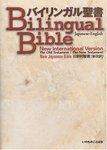
Book Summary
Subtle-body practices are found particularly in Indian, Indo-Tibetan and East Asian societies, but have become increasingly familiar in Western societies, especially through the various healing and yogic techniques and exercises associated with them. Typically, subtle-body practices assume a quasi-material level of human existence that is intermediate between conventional concepts of body and mind. Often, this level is conceived of in terms of an invisible structure of channels, associated with the human body, through which flows of quasi-material substance take place. Subtle-body concepts form the basic explanatory structure for a wide range of practices. These include forms of healing, modes of exercise and martial arts as well as religious practices aimed at the refinement and transformation of the human mindbody complex Subtle-body practices of many kinds have been introduced into Western societies in recent years, and hundreds of thousands of people are involved with using them in one way or another. It no longer makes sense simply to dismiss them as unscientific or nonsensical, but it is far from easy to know what kind of sense to make of them. This book explores subtle-body practices from a variety of perspectives. It includes both studies of these practices in Asian and Western contexts, and explorations of the possibilities for new models of understanding which these concepts open up.
Book Details
| Book Name | Religion And The Subtle Body In Asia And The West: Between Mind And Body |
| Author | Geoffrey Samuel, Jay Johnston |
| Publisher | Routledge (Oct 2011) |
| ISBN | 9780415608114 |
| Pages | 240 |
| Language | English |
| Price | 6622 |








